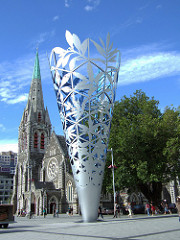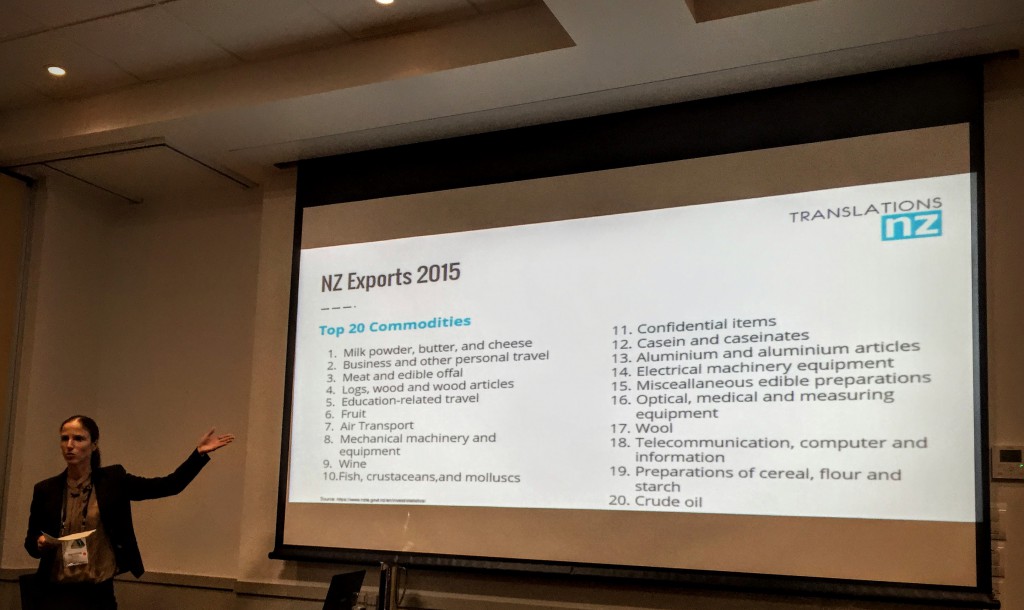After last week’s summary of day 1 of the 2016 NZSTI Conference in Christchurch from 28-29 May, the highlights of day 2 will follow here.
Brave Chinese Translators
Day 2 started with Professor John Minford’s keynote address titled “Warriors of Light – Translation, Literature and Predestined Affinity”. Prof John Minford is an Emeritus Professor of Chinese at the Australian National University and a renowned sinologist. He gave an enlightening and inspiring talk about the hardships his four “warriors of light”, Chinese translators working between the mid-19th and mid-20th centuries in China, had to endure. These four translators were also largely responsible for bringing Western literature to China, and some of them also great calligraphers, wenren or literati (someone who revered the written word in the old Chinese sense) still famous today for their art. The audience was first introduced to Lin Shu who decided to translate the works of Scott, Dickens, Doyle, Dumas, etc. into Chinese – without any knowledge of the source language! This didn’t, however, hinder his productivity of 1,500-2,000 words per hour. His recipe for success was to work in tandem with someone who knew the source language: He listened to the oral translations of the foreign works and then transferred them into the literary Chinese language. It is therefore no great surprise that his “translations” were not true accounts of the original stories. Nonetheless, he was very popular and successful. The second warrior, Yan Fu, had studied at the Royal Naval College in London and started translating important non-fiction works into Chinese upon his return to China. His intention was to translate thought, not literature. Until today, Yan Fu is revered as a great pioneer. The next translator, Fou Lei, saw self-cultivation as the most important pursuit in life. His complete translations encompass 15 volumes. He was also prosecuted in his time and eventually committed suicide together with his wife after a day of public humiliation and torture. The last of the four translators, Mu Dan, was also prosecuted, his home ransacked on numerous occasions and manuscripts taken away. He translated Don Juan into Chinese.
Following the keynote address, two sessions were run in parallel: Liang Yi on the influence of cross-cultural factors on medical interpreters and Hyden Toonen on improving translation income. I attended the former which was a well-structured presentation by a highly experienced medical interpreter. She highlighted some of the conflicts she had encountered as interpreter in medical settings and how she had resolved them. Interestingly, Liang Yi compared two different Codes of Ethic for interpreters, one from Australian NAATI and the other one from the American equivalent. The former is stricter and seems to be more suitable for conference interpreters, whereas the American colleagues seem to take the differences between two cultures into account. Liang Yi argued that it might be time to update the Code of Ethics for public service interpreters.
Digital Revolution in the Translation Industry
Then, Alison Rodriguez, a member of AUSIT and of the FIT Council, and part of the organising committee of the 2017 FIT Congress in Brisbane, spoke about diversification and disruption in the digital revolution. She presented some of futurist Ray Kurzweil’s theories and scenarios, for example the concept of singularity: when humans transcend biology – all with reference to the translation and interpreting profession. She highlighted how important it is for translators and interpreters to join the [machine] conversation otherwise other parties will determine the future of the profession. Lastly, she stated that the future translator needs a mercenary attitude: solve problems and provide services where there is a need, and then proceed to the next. I am now very much looking forward to next year’s FIT Congress!
Next was Rebecca Jiang on simultaneous interpreting by professional English/Chinese interpreters while Dr John Jamieson spoke about extending the scope of non-fiction in translation. I did attend the latter talk. John Jamieson is well-known in New Zealand and has learned about 20 languages over the course of his impressive career. His latest conquest was Finnish in which he promptly proceeded to provide examples on noun translation and concept, a case study between English and Finnish. His conclusion: The English language might possess a fear of nouns.
Machine Translation and Successful Translators in New Zealand
Before lunch on the second day, Jean-Paul Pires of Straker Translations talked about machine translation, the future challenge while I gave my presentation on how to establish a successful translation business in New Zealand despite the country’s geographical isolation. To view my presentation, just click on the link in the previous sentence.
CAT Tool Workshop, Japan and Self-Care for Translators and Interpreters
After lunch, NZSTI offered a CPD workshop on CAT tools, led by Ian Cormack. The attendees could experience first-hand how to work with SDL Studio and memoQ. At the same time, Dr Henk de Groot gave a talk on the interpreter’s guild in Edo period Japan, followed by Ilse von Hirschberg-Sheehan’s workshop “Emotional self-care for translators and interpreters”. The closing address was delivered by Dr Henry Liu, a long-standing member of NZSTI and currently President of FIT, on the front line in translation which touched on machine translation, the future of the profession and drew from his vast experience and exposure to the state of translation worldwide. Dominic Hartnett was the lucky winner of SDL Studio 2015, sponsored by NZTC International and SDL. Congratulations! The conference closed at around 3.45 pm on Sunday afternoon.
For me, the 2016 NZSTI Conference was a great chance to catch up with colleagues, to meet new faces and to hear about the amazing work our colleagues in New Zealand are doing. I very much look forward to the 2017 NZSTI Conference already!

.png)

